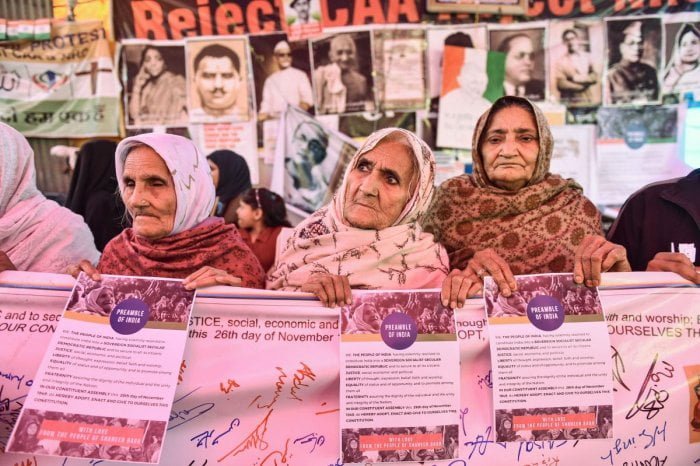The ongoing protests against the National Register of Citizens (NRC) and the Citizenship (Amendment) Act (CAA) have been punctuated with images, frequently and passionately, of women – the huge number of Muslim women and children all over the country (including, in fifteen different places in Delhi itself like Shaheen Bagh, Seelampur, Hauz Rani) who have been sitting and demonstrating 24/7 against the present government regime, Aishe Ghosh, the President of the Jawaharlal Nehru University (JNU) Students’ Union standing up against goons who attacked her, leaving her with a bandaged forehead and a slinged arm; Ayesha Renna and Ladeeda Farzana, two women from Jamia Milia Islamia (JMI) who fought with the police to save a fellow student from getting beaten up; Deepika Padukone, who visited the JNU campus soon after the attack on its students by outside goons earlier this month; the woman from Delhi University (DU) who was identified as one of the attackers in the aforesaid violence on the JNU campus; and the woman who was seen distributing roses to police persons at a protest against the CAA and NRC at Jantar Mantar.
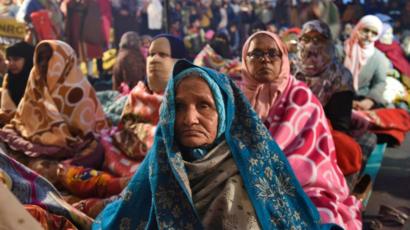
Who Are These Women?
Opinions around these women abound all around, and they don’t all belong to the same camp. But what can definitely not be denied is that women’s voices have been getting louder and louder in these protests. “They tell women to stay at home and not speak up, but speak up we must. Nobody can take our voice,” Ayesha Renna and Ladeeda Farzana say, and the sheer grit in something as fundamental as being able to use our voices is not lost on anyone. The video that showed Renna and Farzana fighting with police persons to save their fellow student went viral, with people hailing the two women for their bravery and strength. The question of ‘voice’, or ‘awaaz’ is a major motif of the ongoing protests. In fighting against the existing political regime, what is getting curbed the most is the right to express (including, dissent).
It is in this milieu that women are in the news, reclaiming spaces that have so far been tacitly denied to them. The women and children sitting days and nights in protest sites like Shaheen Bagh, breaking stereotypical norms around women that imagine them occupying the home, and disturbing questions of mobility that confined women to the streets only while the sun is still out is inspirational.
Peaceful protests are disrupted for not having ‘permission’ from the police; Section 144 gets indiscriminately applied in areas where protests are scheduled to happen; internet and communication bans not only in areas where protests are happening, but also in entire states like Kashmir and Assam, as “pre-emptive measures”; police persons, military and riot forces are being deployed at protest sites, and university spaces and the application of the National Security Act for a period of four months from January to April (it gets implemented every year around Republic Day, but not for such an extended period of time), creating an atmosphere of intense fear that implicitly denies people the right to express unpopular concerns and opinions.
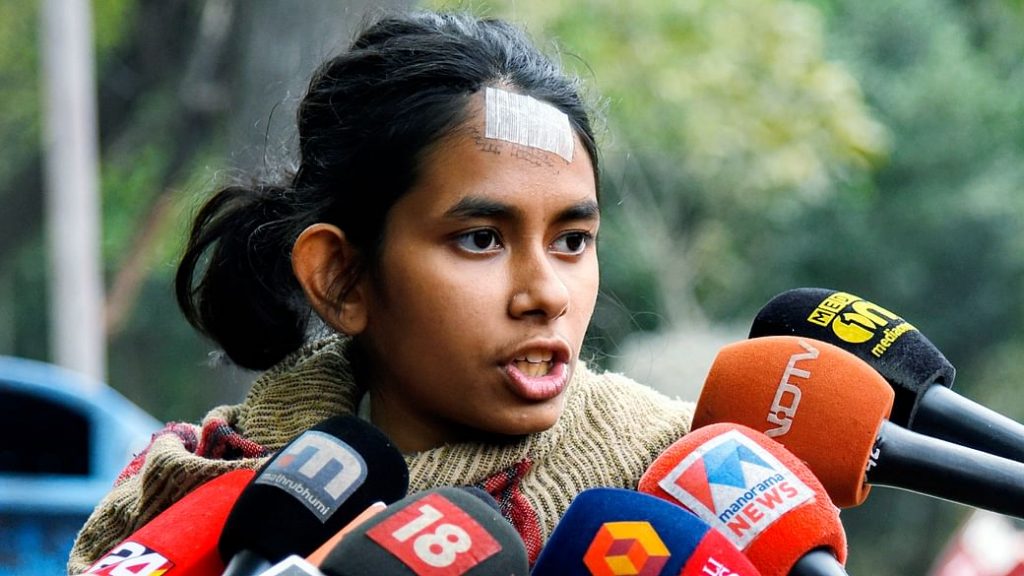
It is in this milieu that women are in the news, reclaiming spaces that have so far been tacitly denied to them. The women and children sitting days and nights in protest sites like Shaheen Bagh, breaking stereotypical norms around women that imagine them occupying the home, and disturbing questions of mobility that confined women to the streets only while the sun is still out is inspirational. They are also fighting police persons, and breaking barricades and leading protest movements against fee hikes.
In the case of Padukone, they are entering realms previously unprecedented of them to stand for a cause at personal risk. Her movie “Chhapaak” which was touted to be the reason she visited to JNU, has not done very well at the box office. There were calls for boycotting her films, and several are of the opinion that movie tanked because of her show of solidarity towards JNU.
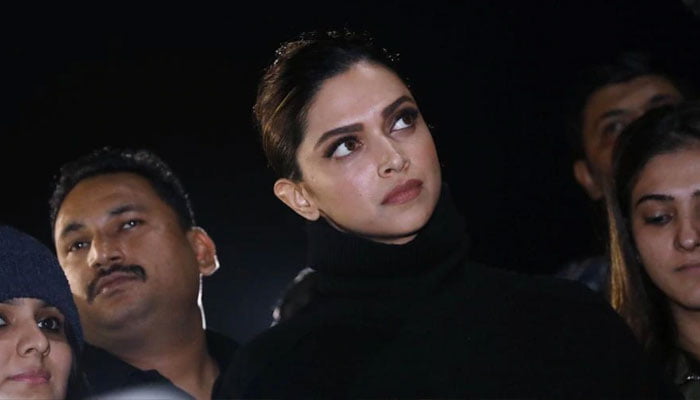
Women As The Faces Of Movements
Of course, women being the face of movements is not entirely uncommon. Women have demonstrated time and time again against atrocities in different ways – they began the Chipko Movement against environmental degradation in Uttarakhand; they led the anti-alcohol agitations in Andhra Pradesh; and also led anti-reservation agitations in Uttar Pradesh when the Mandal Commission Report was released. And we have international leaders like Greta Thunberg, Malala Yousafzai and Nadia Murad leading movements within their personal contexts. This new wave of women protesters has now taken center stage in India’s political climate change.
Also read: The Resilient Women Of Shaheen Bagh Dissent On The Streets
When women and children first started their sit in at Shaheen Bagh, they hadn’t thought that Shaheen Bagh and they would become synonymous with resistance. Speaking to a woman at the protest, she told me that she hadn’t been part of the initial days of the protest, but soon started visiting the site everyday for a couple of hours when she could find the time. She didn’t stay nights, she said, but expressed a wish to. The marquee at Shaheen Bagh where the women and children sit is a vibrant place, with the children playing and women engaged in daily banter.
They make standing up for something seem effortless, and with them as the spine of the movement, they are simultaneously enabling other women to not just protest against an oppressive regime, but also to reclaim the very contentious nights – that time in the day that most women have had reason to be fearful of.
Yet, they are mindful of the sloganeering, and always raise their voices in unison. They make standing up for something seem effortless, and with them as the spine of the movement, they are simultaneously enabling other women to not just protest against an oppressive regime, but also to reclaim the very contentious nights – that time in the day that most women have had reason to be fearful of.
“It is easy to be cynical about Shaheen Bagh. What will it achieve? Hasn’t it become a cool fad? Isn’t it pointless? For them the first answer is catharsis. Shaheen Bagh is for those who feel choked and disenfranchised in the world’s largest democracy and want to go for a breath of fresh, polluted Delhi air. Do not belittle their need for catharsis,” says an article on Shaheen Bagh by Shivam Vij for Scroll.
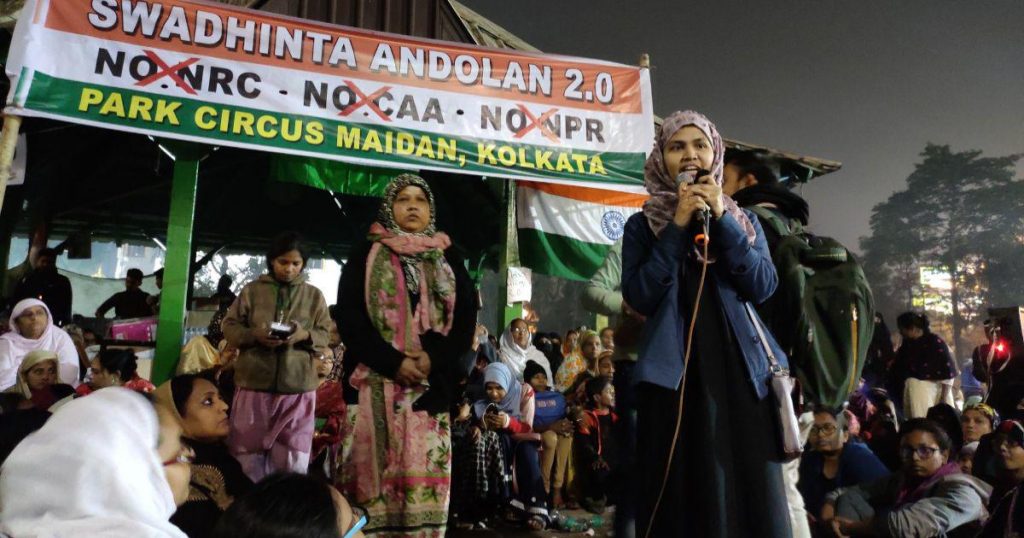
This is the question that is also been given voice by our government, who have continuously been verbally questioning the need for a Shaheen Bagh. The answer that women’s agency is finally giving back to the government is actually that of a sigh of relief – the disenfranchised nature of women’s agency previously is getting replaced by a fearless need to speak.
Conclusion
What had been a continuous critique of the women’s movement that it alienates intersectionalities and tends to become homogenous in its membership is something that is slowly getting challenged and changed in the ongoing protests. Here, women from different locations are joining hands together to fight against the current government. As a woman student from Lucknow told Scroll, “The protest may have been led by men in many parts but how did they spread so quickly across the country? Because women students have been quietly working around the clock from their homes in an organized manner.”
Also read: In Photos: The Unputdownable Voices Of Shaheen Bagh
This is also the reason the protests have been self-sustaining – with the level of organization that has been continuously maintained at all protest sites. It is made certain that everyone is well fed, and have adequate shelter in the cold. Children play around the sites, dancing to slogans of “azadi”, without fear or hesitation. It is heartwarming to see the women occupy the frontline at these sites, with men either sitting at the back, or manning the tea stalls, and food booths. These women in Shaheen Bagh have now become agents of subversion, fighting not just against the CAA and NRC, but also implicitly fighting against stereotypes of being a woman, and allowing spaces for all other women to use their voices.
Featured Image Source: Deccan Herald
About the author(s)
Himalika is slowly beginning to get the hang of being an adult, despite being a bad cook. She will take most things with a sense of humour and is constantly striving to infuse feminist practices in her research.
